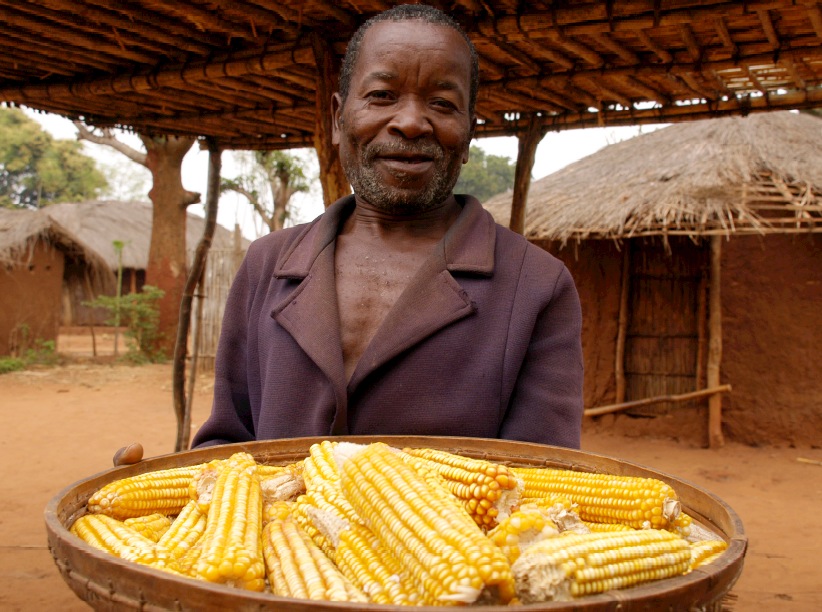- 5th European Symposium on South American Camelids.
- Wine makers count on biodiversity to help them out against pests.
- Sandor Katz, fermentation guru.
- Uttarkhand farmers turn to “herb.” Maybe they went to college here. Luigi comments: I’m on next flight.
- Kenyan governments counts on fish. Wont be holding my breath.
- Moises Jimenez, Bolivian farmer.
- Farming sponges. Not Luffa, the stuff in the sea!
Building on coconut
The World Bank’s Development Marketplace 2009 is continuing to feature stories from the winners on its web site. And that’s good because we can scan them as they come up and draw attention to those that involve agricultural biodiversity. Today’s pick, a project from Samoa to build traditional houses “as models of ‘safer, accessible, resilient, and sustainable housing'”.
What’s particularly nice about this is the idea that traditional Samoan houses depend absolutely on agricultural products like the coconut fibre rope that people use to lash the components together. Modern houses built from steel reinforced concrete and corrugated metal cannot withstand cyclones, and their materials become deadly flying objects during storms. Hence the “innovation” of rediscovering traditional methods and material. Might help conserve coconut diversity too, I suppose.
Oh, and in case you were wondering about more obvious, though no less traditional, things to do with coconuts, why not download Coconut Recipes, from Bioversity International and COGENT?
Nibbles: Satellites, Nutmeg, Thanksgiving food, Fungi, Moroccan wine
- Farming from space.
- (Part of) the history of nutmeg.
- “Eat Like a Pilgrim.”
- Biggest fungal collection in the world created.
- Loss of indigenous grape varieties not holding Moroccan winemakers back.
Do farmers know how to save seeds?
There’s a strange story one hears in various quarters, that small-scale farmers, outside the industrial mainstream, don’t really know how to save their own seeds. We saw it a couple of weeks ago in a comment from Andre, who said that European legislation ensures that “varieties [are] properly maintained and registered and the seed produced according to state-of-the art standards and certified”. The clear implication is that seed produced under any other regime is likely to be defective in some way. I don’t have numbers, of course, but this kind of argument seems to be reasonably common among proponents of high-tech seed breeding. But I was rather surprised to see a somewhat similar argument in a project in the World Bank Development Marketplace, which is busy building to its giddy and exciting conclusion even as I write.
One of the finalists, Helvetas Mozambique, justifies its proposal like this:
“Without access to quality seeds, subsistence farmers practicing rain-fed agriculture continue recycling grain that has been exhausted after generations of cultivation, producing poor yields. …”
To break this cycle, Swiss-based Helvetas proposes what it calls a “zero-emission fridge” consisting of low-cost storage facilities run by community-owned seed banks that “distribute quality seeds of improved crop varieties and serve as a social safety net to benefit 10,000+ rural households”.
What is this notion that grain can become “exhausted after generations of cultivation”? It used to be said of potatoes in Europe, before anyone really understood anything about either sexual reproduction or tuber-borne diseases. And the proof was that if you saved potato fruits and planted true potato seed, the plants were much more vigorous, usually because the seeds did not contain the virus load that plagued seed tubers. Sex reinvigorated the stocks.
 Judging from the picture accompanying the piece on the Helvetas proposal, the grain in question is maize. And maize does indeed suffer from inbreeding depression if seeds from too few individuals are saved, but I’m not aware of any evidence that experienced maize farmers don’t understand this. Does Helvetas have evidence that inbreeding depression is a real problem? Or is it, perhaps inadvertently, promoting a view that one reason subsistence farmers don’t have Swiss bank accounts is that they don’t know what they’re doing?
Judging from the picture accompanying the piece on the Helvetas proposal, the grain in question is maize. And maize does indeed suffer from inbreeding depression if seeds from too few individuals are saved, but I’m not aware of any evidence that experienced maize farmers don’t understand this. Does Helvetas have evidence that inbreeding depression is a real problem? Or is it, perhaps inadvertently, promoting a view that one reason subsistence farmers don’t have Swiss bank accounts is that they don’t know what they’re doing?
Nibbles: Fruits, Herbal remedies, Assisted migration
- Cinderella fruits hit the limelight.
- Deconstructing rainforest shamanism.
- The assisted migration debate rages on.